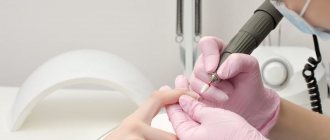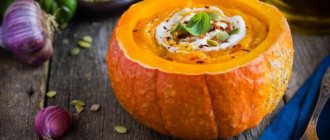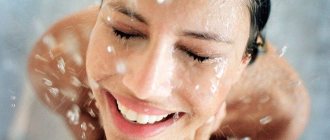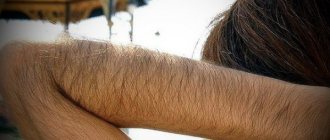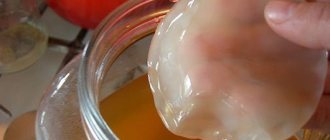This terrible word "inhalation"
Unfortunately, for many of us, the word “inhalation” is almost synonymous with the expression “medieval torture.” This is due to nightmarish memories from childhood: a pan with boiled potatoes, a column of steam pouring out of it, and a thick blanket on the head to complete the picture and the absolute inability to inhale even a sip of unheated air. Instead of a saucepan, sometimes there was a teapot with brewed medicinal herbs. It's time to fight childhood fears! And misconceptions about inhalation. That truly barbaric procedure from the past actually has nothing in common with real inhalation - one of the most effective methods of physiotherapy.
Benefits of inhalation:
- the absorption time of drugs is significantly reduced;
- targeted local effects of drugs on the respiratory system;
- higher efficiency of microdisperse aerosol forms into which liquid drugs are converted in inhalers;
- lower risk of side effects compared to other methods of introducing antibacterial, expectorant, bronchodilator, anti-inflammatory drugs into the body - injections and taking tablets.
How to do inhalations correctly?
To prevent inhalation from turning from an effective method of treatment into a useless or even harmful and painful event, it is enough to follow simple rules, a kind of 9 commandments of inhalation:
- Never carry out inhalation at a body temperature above 37.5 ° C and no earlier than 1 - 1.5 after eating or strenuous physical exertion.
- Nasal and pulmonary bleeding, stage III hypertensive disease, stage III respiratory and cardiovascular failure are absolute contraindications to inhalations.
- Inhalation is a medical procedure, and the time of its implementation must be strictly dosed! The inhalation “dose” is the same as the dose when taking medications. After all, no one would think of drinking the entire package of antibiotics at once.
For children: 1 – 2 times a day for 1 – 3 minutes. For adults: 2 – 3 times a day 5 – 10 minutes.
Better yet, follow the dosage prescribed by your doctor, or, in extreme cases, follow the instructions for using the inhaler.
- Treatment of a runny nose with inhalations requires inhalation through the nose, diseases of the lungs and pharynx - through the mouth. Inhalations aimed at treating the larynx, pharynx, trachea, and bronchi will be much more effective if, after inhaling, you hold your breath for 2 seconds and only then exhale as much as possible.
- Breathing when inhaling through the nose should not be strained; when inhaling through the mouth - see above; Clothing should not interfere with free breathing.
- A small sacrifice for the effectiveness of treatment: inhalation requires silence. During inhalation and for an hour after it, you must remain silent.
- It is not advisable to eat, drink or smoke within an hour after inhalation.
- Simple hygiene: wash your hands before inhalation; if inhalation is performed on a child, so should he.
- Disinfect the inhaler after each use and do not use oil-based preparations in ultrasonic devices.
And it’s completely unnecessary to steam your entire face while taking inhalations. Healing substances are not absorbed through the skin of the face.
Steam inhalations for the face
Steam inhalation is an ancient folk remedy. Of course, each of us has experienced what the greenhouse effect is at least once in our lives. Everyone knows how to treat a cold - sit over a cast iron stove with a salt and soda solution or jacket potatoes. Steaming skin with steam has been known for a long time. It has always been considered a very good way to cleanse and saturate the skin with minerals, vitamins, and moisture.
Today, in the age of nanotechnology, this skin steaming procedure has not lost its relevance. Bathhouse is no exception. With the gentle influence of steam, not only superficial, but also deep cleansing of the skin occurs. The pores open, after which you can easily remove dirt, cosmetics, sebaceous plugs, comedones (blackheads) and dead skin particles. Steam treatments improve blood circulation, moisturize the skin, making it elastic, fresh and healthy.
Currently, there are many super technologies with a greenhouse effect: cosmetic inhalers, mini saunas. You can choose any model based on size, cost, functions, and operating mechanism. All of them are convenient and easy to use. And the procedure itself is a pleasure. Steam procedures are divided into 3 groups: Cosmetic inhalations This procedure is aimed directly at the skin. Under the influence of hot steam, the sweat glands begin to intensively secrete sweat, and with it, waste elements and toxins come out through the skin. Cosmetic inhalation is useful for any skin type, but there are some special features. For example, for acne-prone skin, it is recommended to use aromatic oils of bergamot, grapefruit, pine, eucalyptus, sage and chamomile. These medicinal plants are antibacterial and anti-inflammatory. After this steam procedure, you need to rinse your face with cold water and citric acid. And for dry skin, it is advisable to take baths with linden, dill, and mint. After inhalation, wipe with tonic and moisturizing lotion. For any skin type, you can use neutral decoctions: rose hips, linden blossom, birch buds, nettle, chamomile. Therapeutic inhalations This is an inhalation with medicinal plants and has a strong healing effect. For example, in winter the nasal mucosa becomes especially dry. To maintain normal humidity, it is recommended to use therapeutic steam baths. Toning inhalations This program uses aromatic oils. It is advisable to use your favorite scents to achieve positive results. Tonic inhalations promote relaxation, relieve stress, improve mood and sleep. General rules for using steam inhalers Inhalation should be carried out 1-1.5 hours after meals. The environment during the procedure should be calm. Clothing should not make breathing difficult. Duration 10-15 minutes. After completing the inhalation, you need to rest for 15-20 minutes. Refrain from eating for 1 hour. Contraindications for the use of steam inhalers
- The presence of a pronounced vascular network of “stars” on the face.
- Increased body temperature.
- Heart failure
- Heavy bleeding
- Severe diseases of the respiratory tract and lungs.
Devices for steam inhalation are called nebulizers (from the word - cloud).
Currently, many devices have been developed for steam procedures. Steam inhaler "Chamomile". Used for deep cleansing of facial skin and treatment of upper respiratory tract diseases. The Jasmine inhaler has good reviews. The device is perfect for steam baths, humidification and aromatization of rooms. The Beurer steam inhaler with facial sauna is a great gift for women! Amazing rejuvenating effect. Under the influence of vapors of medicinal herbs, the pores expand, and the skin is cleansed of dirt and dead cells. Bremed BD 7100 provides the effect of a steam sauna. Betro is a convenient inhaler for home use. Can be successfully used for therapeutic and cosmetic inhalations.
When copying materials, a link to the site https://www.zdravplus.ru is required.
You have no rights to post comments
What types of inhalations are there?
Inhalations are distinguished by temperature:
- up to 30 oC – wet;
- up to 40 oC – warm-humid;
- up to 45 oC - steam.
Inhalation with boiling water is dangerous to health! Steam that is too hot causes burns to the upper respiratory tract. When steam inhalations are carried out correctly, the maximum permissible steam temperature is 52 – 57 oC.
Inhalations are classified according to the type of drug used.:
- dry (powder);
- oil
During dry inhalations, the sprayed medicinal solution is mixed with hot dry air. After the water evaporates, the particles suspended in the air are inhaled and penetrate deep into the lungs. Dry inhalations are used mainly for inflammatory diseases of the upper respiratory tract. There are also simple powder blowers for spraying powdered medicinal substances. The advantage of dry inhalation is that it allows for more accurate dosing of the medicinal substance compared to wet inhalation.
Oil inhalations are used to create a protective film on the mucous membrane of the respiratory tract during inflammatory processes of a hypertrophic nature (with the formation of crusts) and for preventive purposes.
Important!
The use of oil inhalations is strictly prohibited for those working in hazardous industries with large amounts of any dry dust (flour, asbestos, etc.)! Mixing with dust, the oil creates dense plugs in the lumen of the bronchi. As a result, inflammation develops in the clogged lumens of the bronchi.
If the drainage function of the bronchi is impaired, oil inhalations lead to unwanted excessive accumulation of fat in the bronchi.
Mineral inhalations
Mineral inhalations occupy a special place. Essentially, this is a way to take mineral water internally, but only in atomized form and through the respiratory tract. Mineral inhalations are effective in the treatment of chronic rhinitis, bronchial asthma, allergic diseases, pharyngitis, tonsillitis, laryngotracheitis, bronchitis, residual effects after pneumonia, dust lung disease - pneumoconiosis and even diathesis, gout, rheumatism (radon inhalations).
Well-known mineral waters are used to treat diseases of the upper respiratory tract.
For acute and exacerbation of chronic diseases, it is used for inhalation.:
- salt-alkaline “Essentuki No. 4”, “Essentuki No. 17”, “Narzan”, “Draasun”, “Arzni”.
For chronic nasopharyngolaryngitis:
- sodas “Borjomi”, “Luzhanskaya”, “Dilijan”, “Sairme”;
- sulfite (hydrogen sulfide) “Ekmeri”, “Essentuki”, “Matsesta”, “Pyatigorsk”;
- carbon dioxide "Smirnovskaya", "Slavyanovskaya".
With the help of an inhaler, you can create a balneological resort at home. The temperature of the mineral water should be 35 - 38o C. The water must be left to degas. The duration of mineral inhalation is 10 minutes (inhale through the nose for 5 minutes, through the mouth for the next 5 minutes), 3 – 4 times a day, course – 10 – 15 procedures.
Inhalation at home
Inhalation was once very popular and was considered a very effective treatment for colds. But after the new drugs appeared, physiotherapeutic procedures faded into the background. Now people have begun to think more and more about the dangers of medications and look for alternatives to them. Especially when it comes to the health of our children.
Therapy such as inhalation, of course, cannot be a replacement for traditional treatment, but it has proven itself very well as an adjuvant. Although recently some pediatricians have started talking about the fact that inhalations do not bring any benefit, or even cause harm to the body. Let's try to figure this out, and let each mother decide for herself whether she will treat her child with inhalations.
Inhalation in children is done both for a runny nose and a cough. You can take your child to the treatment room, or you can do inhalation at home.
There are special inhalers that are powered from the mains. There are steam ones, where water with medicine is boiled, and there are more expensive nebulizers. They act differently. With the help of the former, the upper respiratory tract is warmed up with steam, the sputum is saturated with moisture, and the cough turns from dry to wet.
The action of the nebulizer is based on the transformation of the medicinal solution into tiny droplets - a suspension, which easily penetrate through the mucous membrane of the respiratory organs into the blood. Water splitting is achieved using a powerful pump, in which case the device hums quite loudly. There are nebulizers in which splitting occurs thanks to ultrasound; these models are silent and will not scare the child.
The advantage of this inhaler is that it can be used even at temperatures, while steam inhalations for children are contraindicated at a temperature of 37°.
So, we have decided on the device, now it’s time to find out what to use for inhalation for the child. When using a nebulizer, you need to know that not all drugs may be compatible with it. Basically, children do inhalations with mineral water or saline on their own. In more serious cases, the doctor prescribes a ready-made pharmaceutical drug.
When performing steam inhalations for children using a conventional inhaler, various herbs are used to prepare decoctions and medicinal mixtures that have an expectorant effect. These are chamomile, linden flowers, mint, sage, oak bark, eucalyptus, pine needles. The aromatic oils of fir, juniper, mint, and lavender are also used. At the pharmacy you can buy eucalyptus tincture with menthol and add it to water for inhalation.
How to give inhalation to a child?
If a child has a cough, he should inhale the steam through his mouth, and if he has a runny nose, through his nose. In addition to herbal remedies, using a soda solution will be effective: 4 teaspoons per liter of water.
If you don’t have an industrial inhaler in your arsenal, an ordinary kettle with hot water to which the medicine has been added can successfully replace it. A cone with a hole at the end is rolled out of a sheet of paper. The wide part is brought to the child’s face, and the narrow part is inserted into the spout of the teapot.
Inhalation of hot steam should be carried out for children with extreme caution so as not to burn them. The temperature should not exceed 70°. Inhalations for children under one year of age are contraindicated by pediatricians.
Parents should know how many minutes a child can inhale. This time should not exceed 5 - 10 minutes, depending on the age and mood of the child. During inhalation, the baby should be relaxed and breathe evenly. If the child screams and breaks out, then inhalation will not give the desired result.
Many parents use grandma's old method of breathing over a saucepan of potatoes. For greater effectiveness, you can add soda and a crushed clove of garlic to it.
After inhalation, you need to wrap up the child and put him in bed. It is better to do the procedure before going to bed and under no circumstances go outside for two hours.
Inhaler
Using an inhaler makes the inhalation procedure much more effective than simply inhaling steam over a saucepan. If there are people in the house who often suffer from colds or bronchopulmonary diseases, it is worth getting an inhaler. They come in different types, but there are a number of difficulties when using them at home, for example, it is not always easy to coordinate a deep breath and pressing the valve of the inhaler, especially when talking about small children.
Nebulizer - the last word in inhalation
The problem was solved by new generation inhalers - turbuhalers (dry powder inhalers), spacers (devices for precise dosing of aerosol drugs, a kind of adapter between the inhaler and the nasopharynx of the person taking inhalation) and nebulizers. In the nebulizer chamber, the medicinal solution is sprayed into an aerosol and delivered into the respiratory tract. The patient is not required to take any additional action or adjust his breathing to the rhythm of the inhaler. Therefore, the nebulizer is excellent for home treatment of both infants and very old people, relieving allergy and asthma attacks.
Inhalations for a runny nose
Steam inhalations with essential oils bring quick relief from mucus accumulation and difficulty breathing during a runny nose. If a runny nose has just begun, peppermint oil will help, especially in combination with eucalyptus and melaleuca oils. A prolonged runny nose will subside under the influence of steam inhalations with pine, chamomile, lavender and melaleuca oils. They can be used individually and in combination with each other.
Oil inhalations can be replaced with steam inhalations with herbal decoctions.
Inhalations for colds
Honey inhalations are well suited for treating colds and acute respiratory viral infections at home. They do not require constant medical supervision. Natural flower honey has an excellent anti-inflammatory effect.
Dissolve 1 – 2 teaspoons of honey in 100 ml of water.
The solution must always be freshly prepared. For one inhalation – 5 ml of solution. Do it 2 times a day.
Inhalation of onion and garlic juice
Add 3 drops of fresh onion or garlic juice to 5 ml of water or saline solution. They have a pronounced antimicrobial effect.
Inhalation with Kalanchoe juice
Add 1 ml of Kalanchoe juice to 5 ml of water or saline solution. They have anti-inflammatory and antiviral effects.
Inhalation with essential oils
For 200 ml of water, 2 drops of any of the oils - fir, pine, eucalyptus.
Basic rules for the procedure
How to perform inhalations at home:
- If therapy is carried out at home, it is recommended to ensure that the water temperature does not exceed 40°C, and for children - 30-35°C.
- Inhalation over boiling water is a direct path to burns of the upper respiratory tract.
- The exposure is not carried out after eating; you should pause for at least 2 hours.
- When the inhalation is finished, it is better to refrain from loud speech and singing, or going outside.
- Treatment is recommended to be carried out once a day, lasting 5-10 minutes.
- As soon as the patient feels an improvement in his condition, the effect can be stopped.
Inhalations for cough
It must be remembered that in case of purulent sore throat, swelling and elevated temperature, inhalation is contraindicated. The best option for inhalation for cough is using a nebulizer. Today there are many varieties that allow you to use not only herbal decoctions, but also essential oils.
Steam inhalations can relieve sore throats
- with herbal decoctions of sage, chamomile, oregano, thyme (a tablespoon of herbs per glass of water);
- with essential oils - menthol, fir, pine, eucalyptus (10 drops of one of the oils for half a glass of water).
Expectorant inhalations
- decoctions of wild rosemary, devyatsil, coltsfoot, thyme (see proportions above);
- tincture on "Borjomi" of a mixture of flowers of calendula, St. John's wort, chamomile, sage, eucalyptus (a tablespoon of a mixture of herbs per glass of water);
- pharmaceutical tinctures of chlorophyllipt or calendula.
Inhalations for dry cough
Oily: sea buckthorn, peach, eucalyptus oils, propolis with olive oil (no more than 5 drops of oil per 100 ml of water). 5 minutes 1 – 2 times a day for a week.
Inhalations for bronchitis
For 200 ml of water, an oil mixture of 2 drops of mint, 1 drop of sage, 2 drops of eucalyptus and lavender, 4 drops of lemon wormwood.
When not to inhale
Inhalation therapy, like any physiotherapy, should not be carried out when body temperature rises above 37.5˚C.
The procedure is carried out with caution if you are prone to nosebleeds.
Inhalations are not indicated for malignant neoplasms of the respiratory system, severe cardiovascular failure, or decompensation of concomitant diseases (for example, diabetes mellitus).
Such treatment is not carried out without the patient’s desire, for example, when a child cries. In this case, the process of normal breathing is disrupted, and the medicinal substances do not reach their goal.
Inhalations with certain drugs are not indicated if they are individually intolerant.
Separately, I would like to note that with severe bronchial asthma and the development of status asthmaticus, conventional inhalations with bronchodilators become ineffective. Immunity to these drugs develops. To prevent status asthmaticus, self-monitoring of asthma should be carried out, and if your health worsens, consult a doctor in time to adjust treatment. Every patient with bronchial asthma should be trained in this.
Inhalations for children
The first rule of children's inhalations is no boiling water! Only warm-humid (30 – 40o C) and moist (up to 30o C) inhalations. Duration from 1 to 3 minutes, 1 – 2 times a day. And remember, an overdose of essential oils causes dry mucous membranes.
For sputum removal
- soda inhalation (1 liter of water, 4 tsp soda);
- steam of mineral water.
For inflammation of the tonsils
- onion and garlic juice in a ratio of 1 (juice): 10 (water);
- decoctions of crushed cedar, fir, pine, juniper, linden blossom, black currant leaves, oak, birch, eucalyptus, chamomile flowers, lavender (250 ml of water per 1 tablespoon of collection).
Upper respiratory tract infections
- a couple of potatoes, always boiled “in their jackets,” and oat husks;
- herbal decoctions.
For ARVI, an excellent way of aroma inhalation for very young children is to apply a drop of eucalyptus oil or tea tree oil to the collar. But you must be sure that the child does not have atonic dermatitis.
It is useful to inhale the phytoncides released by the onion and garlic pulp in the first 10 to 15 minutes after its preparation. It is enough to spread the pulp in any container around the room in which the baby is located.
Rules for performing inhalations
When performing inhalation at home, it is important to follow several recommendations:
- Before the procedure, be sure to measure your body temperature. If it is above 37 degrees, then inhalation cannot be done.
- Steam heating is best done two hours after eating. And after inhalation it is not recommended to eat for about an hour.
- Inhalations are recommended in the evening - before bedtime.
- Wear comfortable loungewear that will not restrict your movements or interfere with deep breathing.
- After the procedure, it is better to keep complete rest and under no circumstances go outside. Don't talk for about half an hour.
- Particular attention should be paid to the duration of inhalation. You should not breathe above the steam for more than 10-15 minutes.
- Inhale medicinal vapors calmly, without haste. If you are treating a runny nose, breathe through your nose; when coughing, breathe through your mouth.
- It is recommended to carry out inhalations only while sitting at a table, so as not to spill hot water on yourself.
- When giving inhalation to a child, stay close to him at all times.
- If you plan to use essential oils or herbal remedies, make sure you are not allergic to these products. Carry out a trial procedure for 2-3 minutes and observe how you feel. Allergy sufferers can do inhalations with soda or mineral water.
Start steam therapy as soon as you feel unwell, then the condition will not worsen. During treatment, do not forget about plenty of warm drinks and bed rest.
Video: How to perform inhalation correctly. Types of inhalation
Inhalations during pregnancy
These inhalations are the safest way to treat colds, as they do not have any effect on the functioning of internal organs and on the baby.
There are no special contraindications for inhalations during pregnancy. The only recommendation is to do a tolerance test before inhaling with essential oils to eliminate the risk of an allergic reaction. Apply a drop of oil to the inside of your forearm, where you had the Mantoux test done as a child. If no changes occur after 30 minutes to an hour, inhalation with this oil will only benefit you.
Inhalations with essential oils during pregnancy should not last longer than 5 – 7 minutes!
Inhalation recipes during pregnancy
Recipes for inhalation during pregnancy do not differ from recipes for inhalation in a less “force majeure” situation.
Dry cough during pregnancy
Decoctions of marshmallow, plantain, linden blossom, sage, thyme, chamomile, St. John's wort.
Wet cough during pregnancy
- decoctions of lingonberry leaves, yarrow, wild rosemary, eucalyptus, string, coltsfoot flowers.
- “Borjomi” or soda solution (2 - 3 tablespoons per liter of water).
Laryngitis, tracheitis, bronchitis during pregnancy
Inhalations with essential oils of lime, fir, myrtle, sage, calamus, rosemary, eucalyptus, cedar, lavender, pine, rose.


